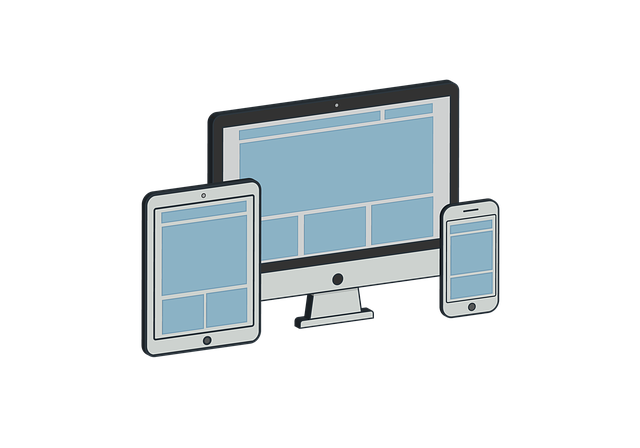Startup branding leverages graphic and web design to create a unique, memorable visual identity that aligns with its mission and values. In today's competitive digital arena, startups must embrace creative web design to stand out, foster brand recognition, and enhance user experience. This involves exploring diverse aesthetics, implementing responsive layouts for multi-device compatibility, adopting sustainable practices, and personalizing designs based on user data. By prioritizing creative web design, startups can attract visitors, engage users, boost satisfaction, and drive growth through intuitive navigation, clear messaging, and consistent branding across all devices. Case studies from companies like Airbnb and Dropbox demonstrate the power of creative web design in transforming simple online presences into engaging experiences.
In today’s competitive market, startups need powerful graphic and web design to stand out. Effective branding lays the foundation for visual identity, while creative web design trends shape the digital landscape. Understanding user experience (UX) is crucial for startup success, ensuring users navigate sites seamlessly. Color psychology, typography, and information architecture guide emotional connections. Consistency across platforms solidifies branding, and mobile optimization reaches on-the-go customers. Explore these elements in our comprehensive guide to unlocking successful startup web design strategies with a focus on creative solutions.
Understanding Startup Branding: The Foundation of Visual Identity

Startup branding is a powerful tool for any new business, forming the very foundation of its visual identity. It’s about crafting a unique and memorable image that resonates with your target audience. In the realm of graphic and web design, this means translating the startup’s mission, values, and personality into a visually appealing brand language. A creative web design approach can help startups stand out in a crowded market by creating an engaging online presence.
Effective branding involves aligning design elements—from color palettes to typography and imagery—with the startup’s core message. This ensures that every visual touchpoint tells a consistent story, fostering brand recognition and loyalty. By understanding their target market and unique selling points, designers can develop innovative solutions that go beyond aesthetics, enhancing the user experience and ultimately contributing to the startup’s success in today’s competitive landscape.
Unlocking Creative Web Design: Trends Shaping the Digital Landscape

In the ever-evolving digital landscape, staying ahead in terms of creative web design is paramount for startups aiming to make a mark. Unlocking innovative visual elements and staying abreast of emerging trends can significantly enhance user engagement and differentiate your brand. From minimalism’s clean lines to the boldness of 3D graphics, designers are experimenting with diverse aesthetics to captivate audiences. Incorporating interactive elements, micro-interactions, and animated transitions not only improves usability but also creates a delightful user experience.
Trends shaping creative web design include a shift towards responsive and adaptive layouts that seamlessly cater to various devices and screen sizes. Sustainability is another significant focus, with designers adopting eco-friendly practices such as optimizing images for faster load times and using sustainable color palettes. Additionally, personalization has become a key differentiator, with startups leveraging data to deliver tailored content and experiences that resonate with individual users.
User Experience (UX) as a Key Component in Startup Success

In the dynamic landscape of startups, User Experience (UX) is a game-changer that can significantly influence business success. Creative web design goes beyond aesthetics; it’s about crafting interfaces that are intuitive, user-friendly, and highly functional. A well-designed website serves as a digital storefront, guiding potential customers through a seamless journey, from initial interest to conversion. By prioritizing UX, startups can ensure their online presence not only attracts but also retains visitors, fostering engagement and boosting customer satisfaction.
Effective UX design involves understanding user behavior, creating intuitive navigation, and implementing responsive layouts that adapt to various devices. It’s about simplifying complex processes, making information easily accessible, and providing a consistent, enjoyable experience across all touchpoints. In today’s competitive market, where users have endless options at their fingertips, startups must invest in creative web design that stands out, builds trust, and drives results, ultimately contributing to long-term growth and success.
Visual Hierarchy and Information Architecture: Guiding Users Through Your Site

In the realm of graphic and web design for startups, understanding visual hierarchy and information architecture is paramount to crafting a compelling and user-friendly online presence. Visual hierarchy involves strategically organizing elements on a page to draw users’ attention to the most important content first. Through creative web design, designers can guide users through a seamless journey, ensuring they find what they need quickly and efficiently. This is achieved by using techniques like contrasting colors, typography, spacing, and placement to create a clear flow of information.
Information architecture goes hand in hand with visual hierarchy, focusing on the structural layout of content. A well-designed information architecture organizes and categorizes data in a logical manner, making it easier for users to navigate and understand. By aligning these concepts, startups can deliver an exceptional user experience, encouraging engagement and conversion. Creative web design that incorporates these principles effectively communicates the brand’s message while ensuring users find their desired actions or information without frustration.
Color Psychology and Typography: Evoking Emotions through Design

Color psychology plays a pivotal role in creative web design, as hues can significantly influence user emotions and perceptions. Warm tones like red and orange evoke feelings of energy, passion, and urgency, making them ideal for startups aiming to capture attention and drive conversions. In contrast, cool colors such as blue and green convey calmness, trust, and professionalism, suitable for brands wanting to establish reliability and serenity. Balancing these colors thoughtfully can create a powerful emotional connection with the target audience.
Typography is another crucial element in graphic and web design for startups. The choice of fonts can dramatically impact readability, brand identity, and user engagement. Serif fonts exude classic elegance and sophistication, while sans-serif fonts offer a clean, modern aesthetic. Bold typefaces grab attention, while delicate scripts add a touch of sophistication. Selecting the right typography not only enhances visual appeal but also ensures a seamless user experience across various devices, making your startup’s online presence truly captivating.
Incorporating Branding Elements into Web Design: Consistency Across Platforms

In the realm of startup branding, a cohesive and creative web design is pivotal for establishing a strong online presence. Incorporating branding elements into web design goes beyond aesthetics; it ensures consistency across various digital platforms, fostering brand recognition and trust among users. A well-designed website that seamlessly integrates logo placements, color palettes, typography, and visual styles from the startup’s brand identity creates a unified user experience.
This integration allows startups to maintain a distinct and memorable brand image, regardless of whether users are interacting with their website on desktops or mobile devices. Consistency in branding elements across different online touchpoints not only enhances visual appeal but also reinforces the startup’s message and values, contributing to a powerful and effective digital marketing strategy centered around creative web design.
Optimizing for Mobile: Reaching On-the-Go Customers

In today’s digital landscape, startups must embrace a mobile-first approach to truly connect with their audience. With an ever-increasing number of users accessing websites and online services via smartphones and tablets, optimizing for mobile is no longer an option but a necessity. Creative web design plays a pivotal role in this strategy by ensuring that visual elements, content, and functionality seamlessly adapt to smaller screens while maintaining brand identity.
A well-executed mobile optimization strategy involves responsive design techniques, simplifying navigation, and compressing media assets without compromising quality. By prioritizing speed and usability, startups can capture the attention of on-the-go customers who value instant access to information. This not only enhances user experience but also improves search engine rankings, as search algorithms favor mobile-friendly websites.
Case Studies: Successful Startup Websites and Their Design Strategies

Successful startup websites often serve as a powerful testament to the importance of creative web design in capturing attention and driving user engagement. Case studies of notable startups like Airbnb and Dropbox demonstrate how intuitive navigation, clean layouts, and innovative visual elements can transform a website from a mere online presence to an experience that fosters user interaction. These companies prioritize a balanced blend of aesthetics and functionality, ensuring their sites are both visually appealing and easy to use.
By examining these case studies, aspiring startup owners and designers can glean valuable insights into effective design strategies. For instance, Airbnb’s homey and inviting visuals evoke a sense of community, while Dropbox’s minimalist approach simplifies complex data management processes. Incorporating user-centric design principles, responsive technologies, and subtle animations not only enhances the user journey but also contributes to the overall success and growth potential of a startup in today’s digital landscape.
